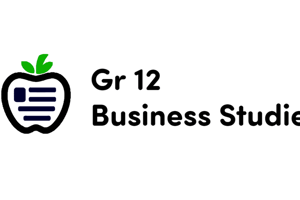Podcast
Questions and Answers
Which statement accurately distinguishes between quality management and quality performance?
Which statement accurately distinguishes between quality management and quality performance?
- Quality management aims for consistent goods/services, whereas quality performance measures departmental results against standards. (correct)
- Quality management involves surveys of users, while quality performance involves improving product design.
- Quality management focuses on measuring the final product, while quality performance focuses on achieving consistency.
- Quality management relies solely on statistical process control, while quality performance emphasizes customer feedback.
How do all departments working together towards the same quality standard impact both quality management and quality performance?
How do all departments working together towards the same quality standard impact both quality management and quality performance?
- No impact at all.
- It is essential for meeting vision/mission/business goals for public relations.
- It ensures accountability in both quality management and quality performance. (correct)
- It primarily enhances quality management by reducing the need for performance measurement.
How does the Production function contribute to the success of a business through quality indicators?
How does the Production function contribute to the success of a business through quality indicators?
- By accurately analyzing financial information.
- By dealing quickly with negative publicity.
- By buying raw materials in bulk at lower prices.
- By providing high-quality products according to specifications. (correct)
What is the role of the Purchasing function in contributing to the success of a business?
What is the role of the Purchasing function in contributing to the success of a business?
Which activity exemplifies the Financial function's contribution to business success?
Which activity exemplifies the Financial function's contribution to business success?
What defines Total Quality Management (TQM) in an organization?
What defines Total Quality Management (TQM) in an organization?
Which of the following is a core element of Total Quality Management?
Which of the following is a core element of Total Quality Management?
How does continuous improvement to processes and systems impact large businesses implementing TQM?
How does continuous improvement to processes and systems impact large businesses implementing TQM?
What challenge do large businesses face in achieving total client/customer satisfaction as part of TQM?
What challenge do large businesses face in achieving total client/customer satisfaction as part of TQM?
What advantage do large businesses have in implementing continuous skills development and training within a TQM framework?
What advantage do large businesses have in implementing continuous skills development and training within a TQM framework?
In the context of TQM, why is adequate financing and capacity crucial for large businesses?
In the context of TQM, why is adequate financing and capacity crucial for large businesses?
How does monitoring and evaluating quality processes impact large businesses when implementing TQM?
How does monitoring and evaluating quality processes impact large businesses when implementing TQM?
Within the PDCA cycle, what action is emphasized during the 'Check/Analyse' stage?
Within the PDCA cycle, what action is emphasized during the 'Check/Analyse' stage?
During the 'Act' stage of the PDCA cycle, what is the primary focus?
During the 'Act' stage of the PDCA cycle, what is the primary focus?
What role do quality circles play in Total Quality Management?
What role do quality circles play in Total Quality Management?
What is a potential impact of poorly implemented TQM on a business?
What is a potential impact of poorly implemented TQM on a business?
How can TQM impact the reduction of the cost of quality within a business?
How can TQM impact the reduction of the cost of quality within a business?
How does improved communication about quality challenges contribute to reducing the cost of quality within a TQM framework?
How does improved communication about quality challenges contribute to reducing the cost of quality within a TQM framework?
What role does sharing responsibility for quality output among management and workers play in reducing the cost of quality?
What role does sharing responsibility for quality output among management and workers play in reducing the cost of quality?
Flashcards
Quality Management
Quality Management
Techniques/tools used to design/improve product quality, ensuring accountability across business functions through collaborative efforts towards a unified quality standard.
Quality Performance
Quality Performance
The total performance of each department measured against specific standards, achieved through collaboration and evaluated via product assessment, statistical analysis, and user/buyer surveys.
Benefits of a Good Quality Management System
Benefits of a Good Quality Management System
Satisfied customers, efficient use of resources, achievement of business goals, and a competitive edge.
General Management Function
General Management Function
Signup and view all the flashcards
Production Function
Production Function
Signup and view all the flashcards
Purchasing Function
Purchasing Function
Signup and view all the flashcards
Marketing Function
Marketing Function
Signup and view all the flashcards
Financial Function
Financial Function
Signup and view all the flashcards
Public Relations Function
Public Relations Function
Signup and view all the flashcards
Administration Function
Administration Function
Signup and view all the flashcards
Total Quality Management (TQM)
Total Quality Management (TQM)
Signup and view all the flashcards
Total Quality Management Elements
Total Quality Management Elements
Signup and view all the flashcards
TQM impact on Large Businesses
TQM impact on Large Businesses
Signup and view all the flashcards
PDCA Model/Cycle
PDCA Model/Cycle
Signup and view all the flashcards
PDCA - Plan
PDCA - Plan
Signup and view all the flashcards
PDCA - Do
PDCA - Do
Signup and view all the flashcards
PDCA - Check/Analyse
PDCA - Check/Analyse
Signup and view all the flashcards
PDCA - Act
PDCA - Act
Signup and view all the flashcards
Role of Quality Circles in TQM
Role of Quality Circles in TQM
Signup and view all the flashcards
Role of Quality Circles in TQM
Role of Quality Circles in TQM
Signup and view all the flashcards
Study Notes
- Quality management utilizes techniques and tools to design and improve product quality.
- It drives accountability across business functions and requires collaboration among departments to meet quality standards.
- Quality management focuses on ensuring consistent quality in goods and services by improving the ways to achieve consistency.
- Quality performance measures the total output of each department against specified standards.
- It occurs when departments work together towards a unified quality standard.
- Quality is measured through product analysis, statistical process outputs, and user/buyer surveys.
Advantages of a Good Quality Management System
- Effective customer service results in greater customer satisfaction.
- It ensures efficient use of time and resources.
- Business goals and objectives are easier to achieve.
- Businesses can gain a competitive edge.
Contribution of Business Functions
General Management
- They develop, implement and monitor strategic plans.
- They ensure all departments and the business meet deadlines and targets.
Production
- They provide high-quality goods that meet set specifications.
- They accurately calculate production costs.
Purchasing
- Buying bulk raw materials ensures lower prices.
- Stock control systems are implemented and maintained.
Marketing
- They increase market share.
- Avoid unethical advertising practices when promoting goods.
Finance
- Capital is obtained from reliable sources.
- Analysis and interpretation of financial information is accurate.
Public Relations
- Should negative publicity occur, it is dealt with quickly.
- Sustainable Corporate Social Investment (CSI) programs are implemented.
Administration
- Reliable information is made available to management promptly.
- Documentation is orderly and safely stored.
Total Quality Management (TQM)
- TQM is an integrated system applied throughout an organization to deliver quality products/services.
- It continually improves products/services to meet customer needs.
- Management ensures employee accountability for the quality of their work.
Total Quality Management Elements
- Continuous process and system improvements.
- Satisfaction of the client and/or customer.
- Consistent education and/or skills development.
Impact of TQM on Large Businesses
Continuous Improvement
- Large businesses have the resources to monitor quality performance in each unit.
- Large-scale manufacturing can complicate quality control.
Customer Satisfaction
- Large businesses use market research/customer surveys to monitor customer satisfaction.
- Employees who do not interact with customers may not fully understand their needs.
Skills Development
- Large businesses have HR departments dedicated to skills training and development.
- Poor communication systems may hinder effective training.
Adequate Financing
- Finanacing for adequate testing before implementing is available.
- Demand can outpace capital, meaning orders come in faster than capital is available to fulfill them.
Monitoring
- Businesses can ensure products are of the required quality..
- Checking the quality of all products may not be viable.
Application of PDCA Model
- The PDCA model is part of continuous improvement to processes and systems.
Plan
- Problems are identified.
- A plan for improvement is developed.
- The method and approach are planned.
Do
- The change is implemented on a small scale.
Check/Analyse
- Data is used to analyze the results of change.
- Improvement is determined
- Effectiveness of processes checked
- Assess, plan and establish if it is working/if things are going according to plan
Act as needed
- The improvement is institutionalized.
- Strategies on how to continually improve are devised.
- Broader implementation occurs if successful.
- The process is continuously revised.
- NOTE:* The PDCA model is part of the TQM element of continuous improvement to processes and systems.
Role of Quality Circles in TQM
- Problems are solved and improvements are implemented.
- Problems investigated and solutions presented.
- Harmony is created and high performance in the workplace.
- Discuss how to improve the quality of work.
Impact of Poorly Implemented TQM
- Investors may withdraw, if a decline in profits occurs.
- Decreased sales if more goods are returned by customers.
- High staff turnover may occur due to lacking skills.
- Decline in productivity can occur because of stoppages.
Impact of TQM on Cost Reduction
- Scheduling activities eliminates task duplication.
- Improving communication about quality.
- Sharing responsibility for quality outputs amongst management and workers.
- Quality circles are introduced to find ways of improving the quality of work.
Studying That Suits You
Use AI to generate personalized quizzes and flashcards to suit your learning preferences.




